| Site: Walker County, GA Date: 2009-October-03 | Photographer: Gerald C. Williamson
Nikon D60
|
| Vernonia gigantea is a member of the Aster family (some call it the Composite Family; some call it the Sunflower family) with only disk florets. There are 13 to 30 florets per blossom. The similar New York Ironweed (Vernonia noveboracensis), which shares much of the eastern-most range with V. Gigantea, has more than 30 florets per bloom. | |
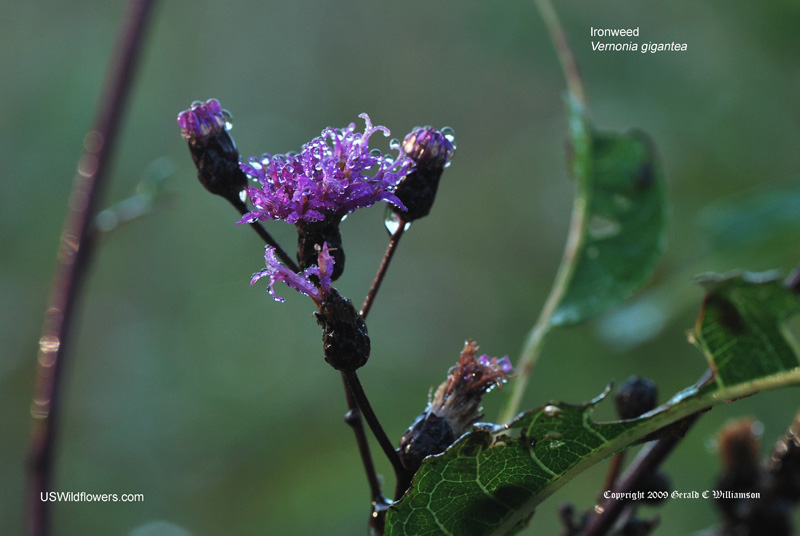
|
| Site: Walker County, GA Date: 2009-October-03 | Photographer: Gerald C Williamson
Nikon D60 |
| | |
Click on the photo for a larger image
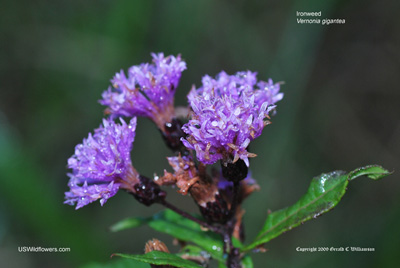
|
| Site: Walker County, GA Date: 2010-October-09 | Photographer: Gerald C Williamson
Nikon D60 |
| Ironweed catching morning rays along with frequent co-habitant Goldenrod in the background. | |
Click on the photo for a larger image
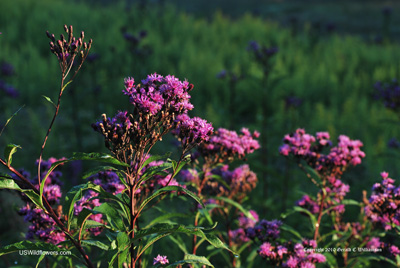
|
| Site: Walker County, GA Date: 2010-August-15 | Photographer: Gerald C Williamson
Nikon D60 |
| The features of involucre parts of many species are used as identifying characteristics. From one description of Vernonia gigantea: "Phyllaries 30–40+ in 4–5 series, glabrate, margins ciliolate, the outer lance-ovate, 1–2 mm, inner oblong, 3.5–5 mm, tips acute or rounded-apiculate." Near as I can translate, that describes these. (Description from Missouri Botanical Gardens.) | |
Click on the photo for a larger image
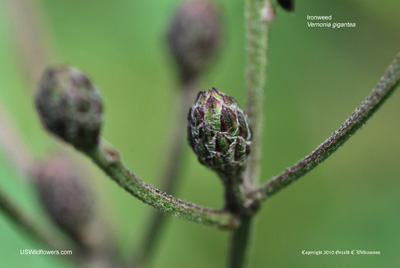
|
| Site: Walker County, GA Date: 2010-August-14 | Photographer: Gerald C Williamson
Nikon D60 |
| | |
Click on the photo for a larger image
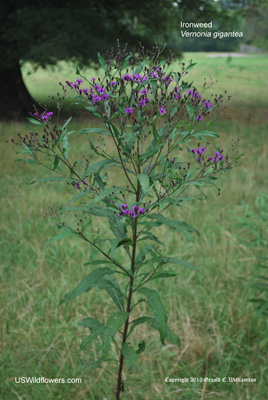
|
| Site: Walker County, GA Date: 2010-August-15 | Photographer: Gerald C Williamson
Nikon D60 |
| The stem of Tall Ironweed may be smooth, or may be covered with tiny hairs as shown in this photo. | |
Click on the photo for a larger image
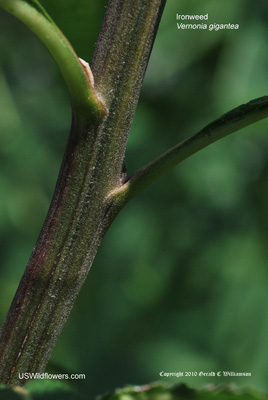
|
| Site: Walker County, GA Date: 2010-August-15 | Photographer: Gerald C Williamson
Nikon D60 |
| Both the upper and lower surfaces of Vernonia gigantea are rough-feeling. The leaf edges are serrated. This plant may include some hybridization with V. flaccidifolia - Tennessee Ironweed - since it does not show the obvious hairs which would be typical of Tall Ironweed. | |
Click on the photo for a larger image
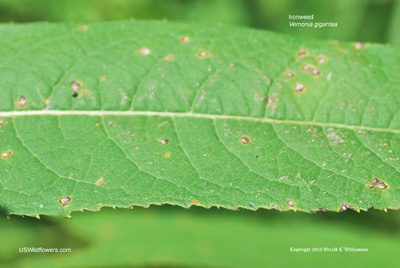
|
| Site: Walker County, GA Date: 2010-October-09 | Photographer: Gerald C Williamson
Nikon D60
Tamron SP 90MM f/2.8 AF Macro |
| Bumblebee leg holding on to an Ironweed blossom on a cool, dewy morning. | |
Click on the photo for a larger image
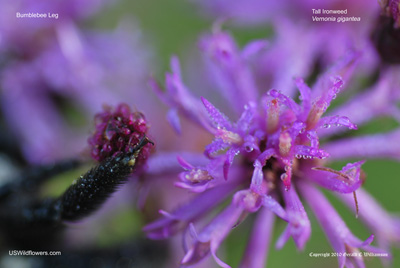
|
| Site: Walker County, GA Date: 2010-November-21 | Photographer: Gerald C Williamson
Nikon D60
Nikon Nikkor AF-S 18-55mm 4-5.6 VR ED
55 (82 equiv) |
| Ironweed may be as beautiful in the fall as in the summer. Here with a backdrop of Goldenrod. | |
Click on the photo for a larger image
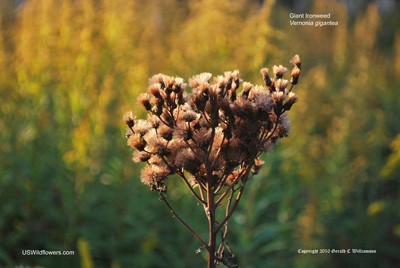
|











